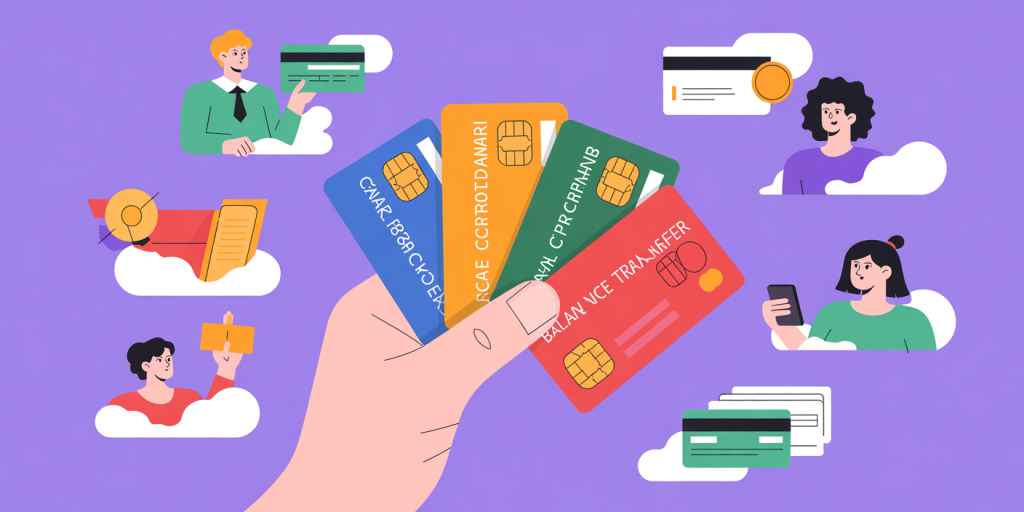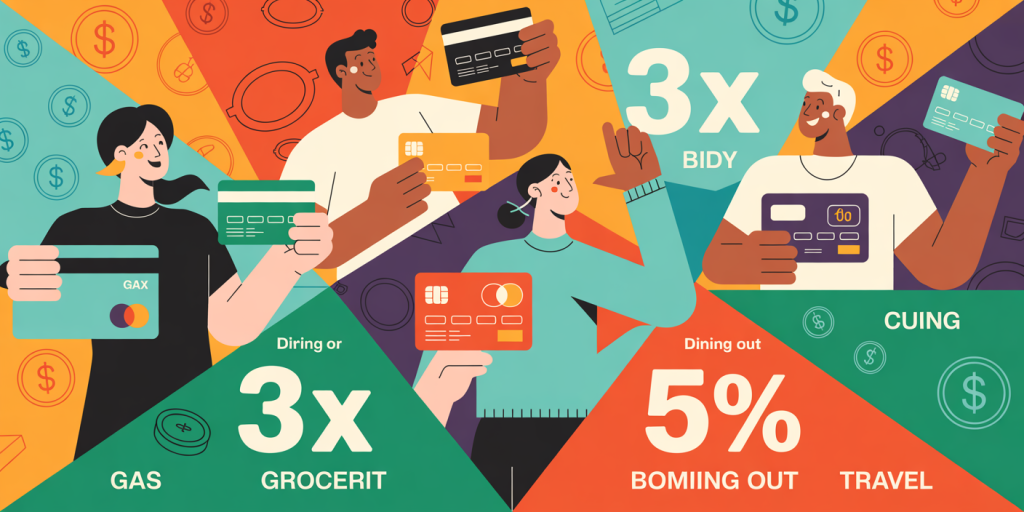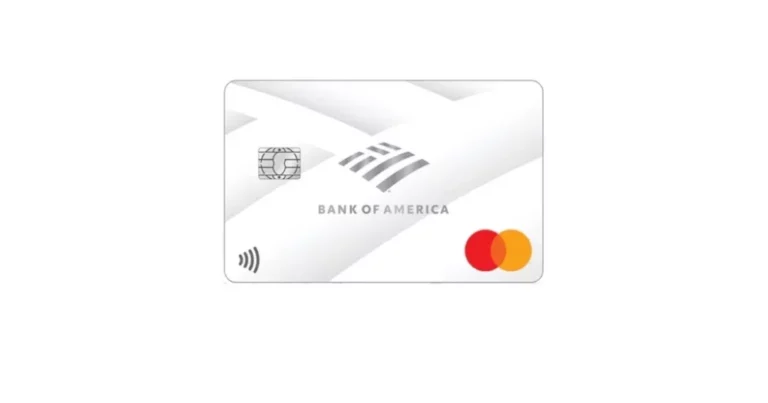Smart Strategies for Managing Multiple Credit Cards
Anúncios
How to Effectively Manage Multiple Credit Cards in the U.S.

In the U.S., credit cards are far more than just a method of payment—they are powerful financial tools. When used responsibly, they can help consumers build credit, earn rewards, and manage expenses more effectively. In fact, many savvy users strategically open and manage multiple credit cards to capitalize on specific perks and benefits unique to each issuer or program.
However, juggling multiple cards also comes with its challenges. Without a well-organized approach, you risk missing payments, overspending, accumulating high-interest debt, or hurting your credit score.
Anúncios
If you currently have multiple cards—or are thinking about expanding your wallet—this guide will show you how to do it strategically, responsibly, and effectively, while protecting your financial health and maximizing your rewards.
Choose Cards That Match Your Lifestyle
Before applying for a new credit card, ask yourself a simple question: Why do I need this card?
Anúncios
Every credit card should serve a specific purpose based on your spending patterns, lifestyle, and financial goals. Adding cards randomly just because you qualify for them can lead to confusion and unnecessary risk.
💳 Types of Cards to Consider:
-
Cashback Cards – Ideal for everyday purchases like groceries, gas, and utility bills. These cards typically offer a percentage back on all qualifying purchases.
-
Travel Rewards Cards – Perfect for frequent travelers. These cards earn miles or points that can be redeemed for flights, hotels, and upgrades.
-
No Annual Fee Cards – Good for long-term credit building. Even if unused for a while, they don’t cost you anything and help lengthen your credit history.
-
Balance Transfer Cards – Useful if you’re carrying debt. These cards offer low or 0% APR on transferred balances for a set period, helping you pay down debt faster.
📝 Pro Tip: Use a spreadsheet or app to list out what each card is for—so you always know when and why to use it.
Stay on Top of Due Dates
One of the fastest ways to damage your credit score is to miss a payment. Payment history is the most significant factor in your credit score (making up about 35% of your FICO score), so staying organized is essential.
🕒 How to Avoid Late Payments:
-
Set up calendar reminders or digital alarms for each due date.
-
Enable autopay for either the minimum payment or the full balance, depending on your preference.
-
If possible, align your billing cycles so all your cards are due around the same time—this makes budgeting and tracking easier.
Even one missed payment can lead to late fees, penalty interest rates, and a noticeable drop in your credit score.
Monitor Credit Limits and Usage
Your credit utilization ratio—how much of your available credit you’re using—is the second most important factor in your credit score (about 30%). Ideally, you want to keep utilization below 30% across all cards, and even lower on individual cards when possible.
📊 How to Manage Utilization Across Cards:
-
Spread out your spending across multiple cards to avoid running up the balance on any single account.
-
Prioritize using cards with higher credit limits to keep percentages lower.
-
Request credit limit increases on your existing cards periodically—just make sure your income supports it.
-
Use credit monitoring apps (like Credit Karma, Experian, or your bank’s own tools) to track utilization in real time.
A healthy utilization ratio not only improves your score but also demonstrates financial responsibility to lenders.
Maximize Rewards Without Overspending

One of the biggest perks of managing multiple cards is the ability to maximize rewards across different spending categories. But chasing points and cashback can easily lead to overspending if you’re not careful.
🎁 How to Earn More Without Spending More:
-
Know each card’s bonus categories—for example, 5% cashback at grocery stores or 3x points on travel.
-
Assign specific cards for specific expenses (e.g., one for gas, another for dining).
-
Stack rewards by linking your cards to loyalty programs or using retailer-specific cashback portals.
⚠️ Important: Only spend what you already planned to spend. Rewards are not worth it if they lead you into debt.
Avoid Carrying Balances When Possible
While rewards are nice, they quickly become irrelevant if you’re paying high interest on unpaid balances. The average credit card interest rate is well over 20%—which can add up fast.
💡 Smart Repayment Habits:
-
Pay your full statement balance each month if possible. This avoids all interest charges.
-
If you must carry a balance, use a card with a lower interest rate or look into balance transfer cards that offer 0% APR for a limited period.
-
Make extra payments during the month if you’re able—it helps reduce your balance before interest accrues.
Responsible usage now sets the foundation for qualifying for lower-interest loans, better credit offers, and even mortgages in the future.
Review Statements and Watch for Fraud
With multiple cards, you also have multiple accounts to monitor—which increases your exposure to fraud or billing errors.
🛡️ Fraud Prevention Tips:
-
Review every statement line-by-line each month for unauthorized charges.
-
Use mobile banking apps to track transactions in real time.
-
Turn on email or SMS alerts for every charge or for purchases over a certain amount.
-
Report suspicious activity immediately. Most credit cards offer zero liability protection, but timing matters when disputing charges.
🔐 Bonus: Consider using virtual card numbers for online purchases to reduce your risk.
Know When to Cancel a Card
You might eventually reach a point where one of your cards is no longer useful. But closing a card should be done strategically, since it can affect your credit score.
❌ Before You Cancel, Consider:
-
Average account age: Canceling a long-standing card can shorten your credit history, reducing your score.
-
Credit utilization: Closing a card lowers your total available credit, which could increase your overall utilization.
-
Annual fees: If a card has a high fee and few benefits, it might be worth closing or downgrading to a no-fee version.
-
Redundancy: If you’ve upgraded to a better card with similar benefits, consider whether keeping both is worthwhile.
Always ensure you have at least one or two other open cards to preserve your credit profile before closing any account.
Final Thoughts: Stay Disciplined, Stay Rewarded

Managing multiple credit cards doesn’t have to be overwhelming. With the right approach, you can boost your credit score, earn valuable rewards, and gain financial flexibility—all while avoiding debt and stress.
🔁 Recap of Best Practices:
-
Choose cards that align with your spending habits and goals.
-
Stay organized with due dates and account monitoring.
-
Watch your credit usage and keep balances low.
-
Maximize rewards strategically, not impulsively.
-
Pay your balances in full to avoid interest.
-
Keep tabs on statements to prevent fraud.
-
Cancel cards wisely, and only when it won’t damage your credit.
By following these strategies consistently, you can unlock the full value of your credit cards and build a solid foundation for long-term financial success.

Post Comment